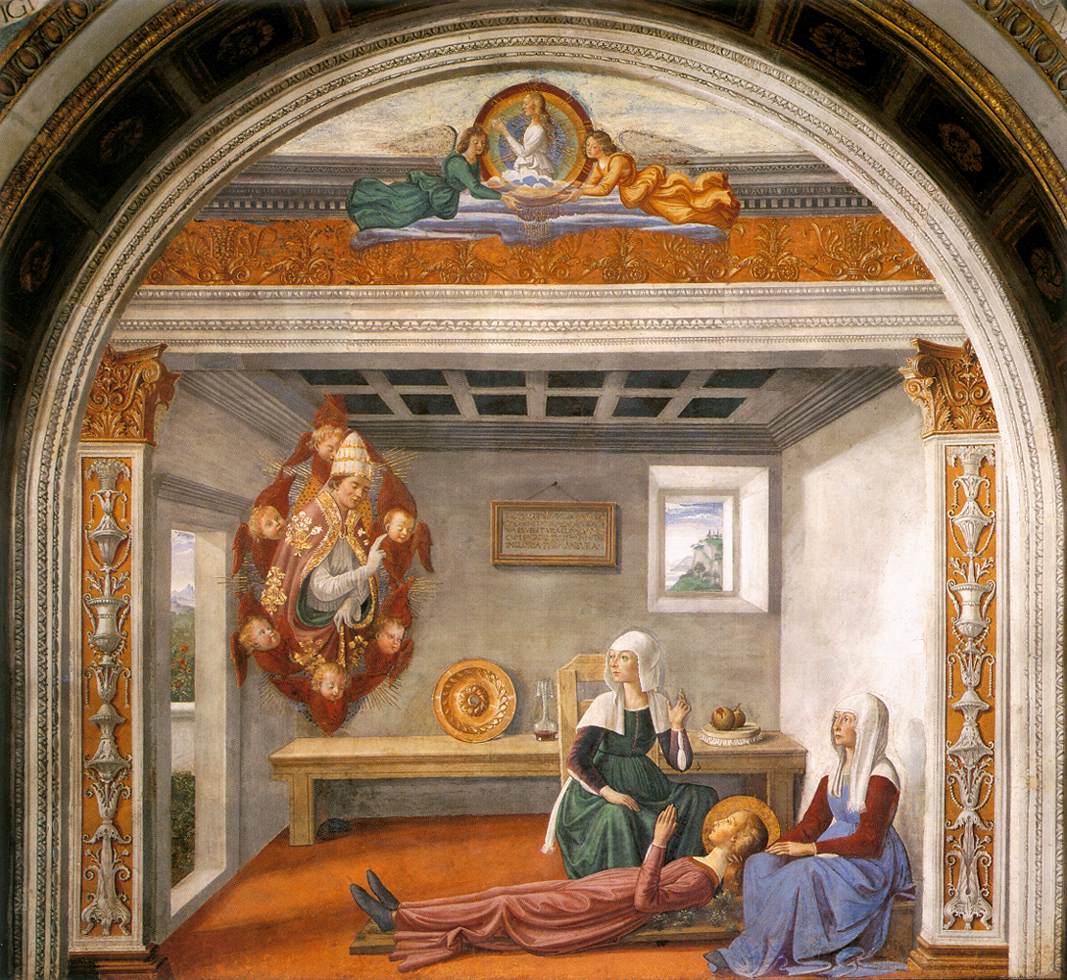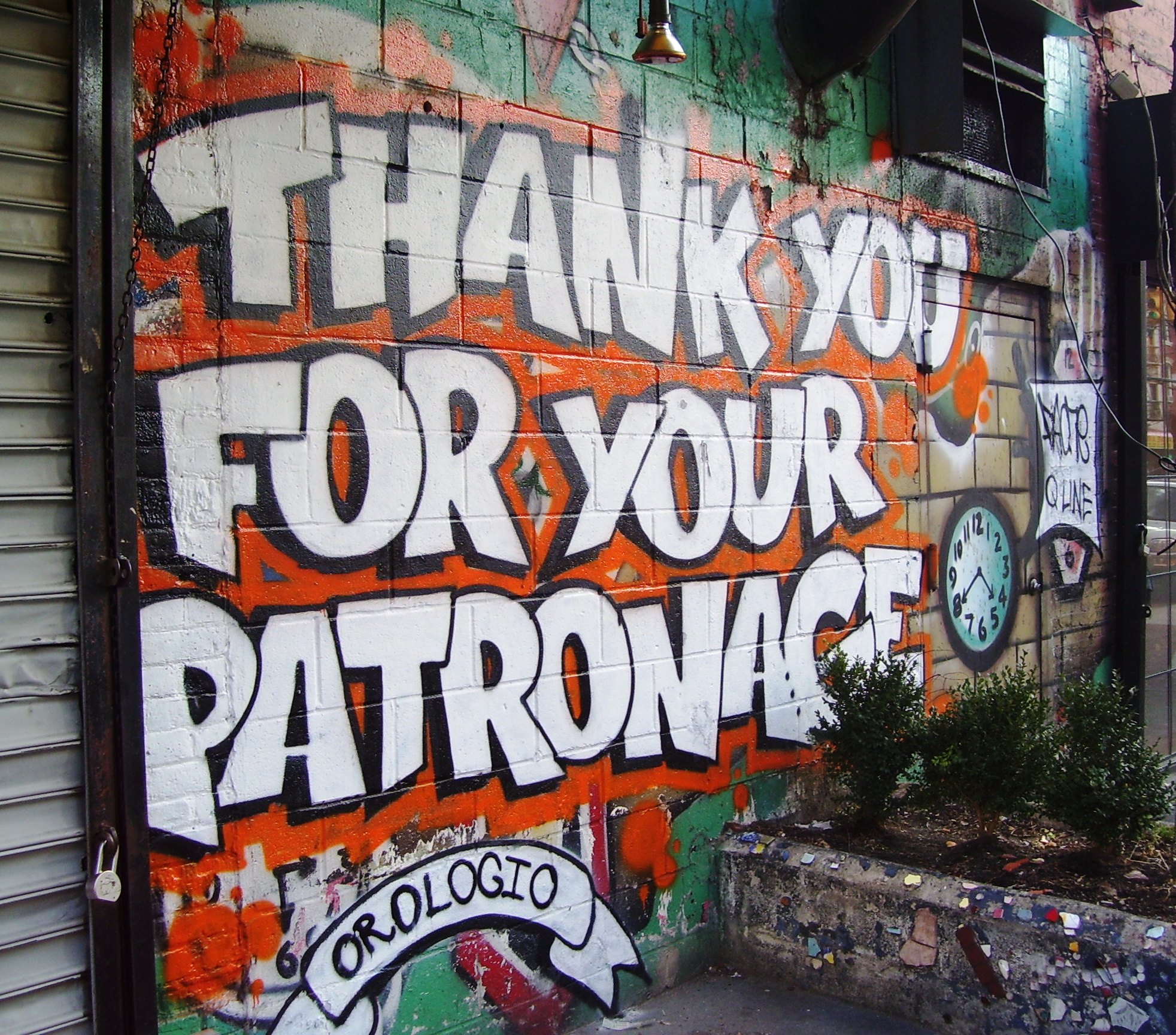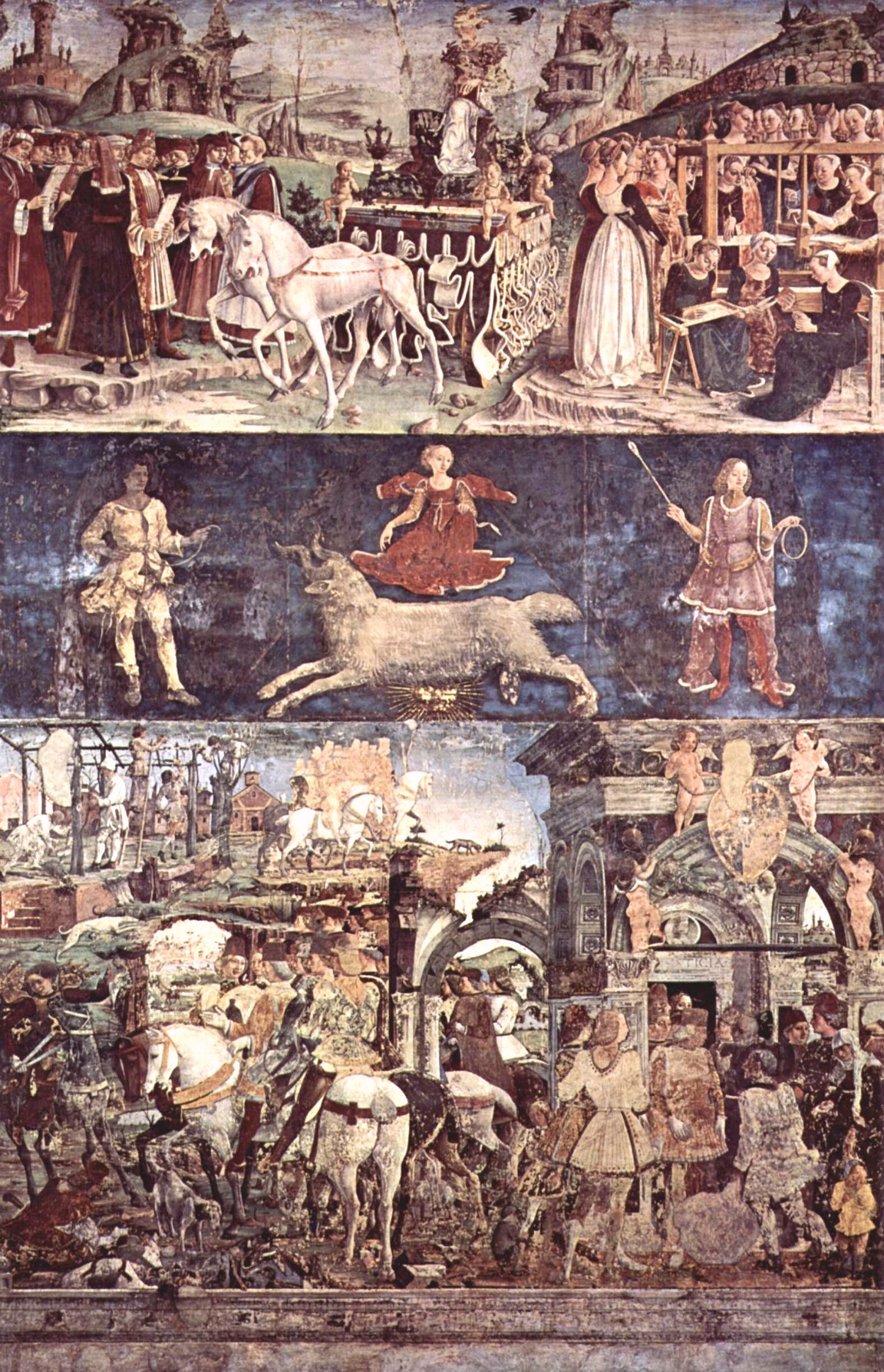|
Borso D'Este, Duke Of Ferrara
Borso d'Este, attributed to Sforza Castle in Milan, Italy. Borso d'Este (1413 – 20 August 1471) was the first duke of Ferrara and duke of Modena, Modena, which he ruled from 1450 until his death. He was a member of the House of Este. Biography He was an illegitimate son of Niccolò III d'Este, Marquess of Ferrara, Modena and Reggio, and his mistress Stella de' Tolomei. Borso succeeded his brother Leonello d'Este in the marquisate on 1 October 1450. left, 220px, A page of Borso d'Este's Bible. On 18 May 1452 he received confirmation over his fiefs, as Duke, by Emperor Frederick III. On 12 April 1471, in St. Peter's Basilica, he was also appointed as Duke of Ferrara by Pope Paul II. Borso followed an expansionist policy for his state, and one of ennobling for his family. He was generally allied with the Republic of Venice, and enemy both to Francesco I Sforza and the Medici family. These rivalries led to the indecisive Battle of Molinella. He was in general appreciated b ... [...More Info...] [...Related Items...] OR: [Wikipedia] [Google] [Baidu] |
Borso D'Este
image:Borso d'Este.jpg, Borso d'Este, attributed to Vicino da Ferrara, Pinacoteca of the Castello Sforzesco, Sforza Castle in Milan, Italy. Borso d'Este (1413 – 20 August 1471) was the first duke of Ferrara and duke of Modena, Modena, which he ruled from 1450 until his death. He was a member of the House of Este. Biography He was an illegitimate son of Niccolò III d'Este, Marquess of Ferrara, Modena and Reggio Emilia, Reggio, and his mistress Stella de' Tolomei. Borso succeeded his brother Leonello d'Este in the marquisate on 1 October 1450. image:Borsobijbel.jpg, left, 220px, A page of Borso d'Este Bible, Borso d'Este's Bible. On 18 May 1452 he received confirmation over his fiefs, as Duke, by Emperor Frederick III, Holy Roman Emperor, Frederick III. On 12 April 1471, in St. Peter's Basilica, he was also appointed as Duke of Ferrara by Pope Paul II. Borso followed an expansionist policy for his state, and one of ennobling for his family. He was generally allied with the Repub ... [...More Info...] [...Related Items...] OR: [Wikipedia] [Google] [Baidu] |
School Of Ferrara (painting)
The School of Ferrara was a group of painters which flourished in the Duchy of Ferrara during the Renaissance. Ferrara was ruled by the Este family, well known for its patronage of the arts. Patronage was extended with the ascent of Ercole d'Este I in 1470, and the family continued in power till Alfonso II, Ercole's great-grandson, died without an heir in 1597. The duchy was then occupied in succession by Papal and Austrian forces. The school evolved styles of painting that appeared to blend influences from Mantua, Venice, Lombardy, Bologna, and Florence. The ties to Bolognese School were particularly strong. Much of the local collections, like those of the Gonzaga family in Mantua, were dispersed with the end of the Este line in 1598. Especially in the late 15th century Ferrara was also a main centre of engraving in Italy. The most famous prints it produced are the two sets traditionally, if inaccurately, known as the Mantegna Tarocchi, each by an unidentified master. A li ... [...More Info...] [...Related Items...] OR: [Wikipedia] [Google] [Baidu] |
Domenico Ghirlandaio
Domenico di Tommaso Curradi di Doffo Bigordi (2 June 1448 – 11 January 1494), professionally known as Domenico Ghirlandaio (also spelt as Ghirlandajo), was an Italian Renaissance painter born in Florence. Ghirlandaio was part of the so-called "third generation" of the Florentine Renaissance, along with Verrocchio, the Pollaiolo brothers and Sandro Botticelli. Ghirlandaio led a large and efficient workshop that included his brothers Davide Ghirlandaio and Benedetto Ghirlandaio, his brother-in-law Bastiano Mainardi from San Gimignano, and later his son Ridolfo Ghirlandaio. Many apprentices passed through Ghirlandaio's workshop, including Michelangelo. His particular talent lay in his ability to posit depictions of contemporary life and portraits of contemporary people within the context of religious narratives, bringing him great popularity and many large commissions.Toman, Rolf Life and works Early years Ghirlandaio was born Domenico di Tommaso di Currado di D ... [...More Info...] [...Related Items...] OR: [Wikipedia] [Google] [Baidu] |
Illuminated Manuscript
An illuminated manuscript is a formally prepared manuscript, document where the text is decorated with flourishes such as marginalia, borders and Miniature (illuminated manuscript), miniature illustrations. Often used in the Roman Catholic Church for prayers and liturgical books such as psalters and courtly literature, the practice continued into secular texts from the 13th century onward and typically include proclamations, enrolled bills, laws, charters, inventories, and deeds. The earliest surviving illuminated manuscripts are a small number from late antiquity, and date from between 400 and 600 CE. Examples include the Vergilius Romanus, Vergilius Vaticanus, and the Rossano Gospels. The majority of extant manuscripts are from the Middle Ages, although many survive from the Renaissance. While Islamic manuscripts can also be called illuminated and use essentially the same techniques, comparable Far Eastern and Mesoamerican works are described as ''painted''. Most manuscripts, ... [...More Info...] [...Related Items...] OR: [Wikipedia] [Google] [Baidu] |
Bolognese School (painting)
The Bolognese school of painting, also known as the ''school of Bologna'', flourished between the 16th and 17th centuries in Bologna, which rivalled Florence and Rome as the center of painting in Italy. Its most important representatives include the Carracci family, including Ludovico Carracci and his two cousins, the brothers Agostino and Annibale Carracci. Later, it included other Baroque painters: Domenichino and Lanfranco, active mostly in Rome, eventually Guercino and Guido Reni, and Accademia degli Incamminati in Bologna, which was run by Lodovico Carracci. Certain artistic conventions, which over time became traditionalist, had been developed in Rome during the first decades of the 16th century. As time passed, some artists sought new approaches to their work that no longer reflected only the Roman manner. The Carracci studio sought innovation or invention, seeking new ways to break away from traditional modes of painting while continuing to look for inspiration f ... [...More Info...] [...Related Items...] OR: [Wikipedia] [Google] [Baidu] |
Patronage
Patronage is the support, encouragement, privilege, or financial aid that an organization or individual bestows on another. In the history of art, art patronage refers to the support that princes, popes, and other wealthy and influential people have provided to artists such as musicians, painters, and sculptors. It can also refer to the right of bestowing offices or church benefices, the business given to a store by a regular customer, and the guardianship of saints. The word ''patron'' derives from the Latin ('patron'), one who gives benefits to his clients (see patronage in ancient Rome). In some countries, the term is used to describe political patronage or patronal politics, which is the use of state resources to reward individuals for their electoral support. Some patronage systems are legal, as in the Canadian tradition of the prime minister appointing senators and the heads of a number of commissions and agencies; in many cases, these appointments go to people who ha ... [...More Info...] [...Related Items...] OR: [Wikipedia] [Google] [Baidu] |
Orlando Furioso
''Orlando furioso'' (; ''The Frenzy of Orlando'') is an Italian epic poem by Ludovico Ariosto which has exerted a wide influence on later culture. The earliest version appeared in 1516, although the poem was not published in its complete form until 1532. ''Orlando furioso'' is a continuation of Matteo Maria Boiardo's unfinished romance ''Orlando innamorato'' (''Orlando in Love'', published posthumously in 1495). In its historical setting and characters, it shares some features with the Old French ''La Chanson de Roland">-4; we might wonder whether there's a point at which it's appropriate to talk of the beginnings of French, that is, when it wa ... ''La Chanson de Roland'' of the eleventh century, which tells of the death of Roland. The story is also a chivalric romance which stemmed from a tradition beginning in the late Middle Ages and continuing in popularity in the 16th century and well into the 17th. Orlando is the Christian knight known in French (and subsequently Englis ... [...More Info...] [...Related Items...] OR: [Wikipedia] [Google] [Baidu] |
Ludovico Ariosto
Ludovico Ariosto (, ; ; 8 September 1474 – 6 July 1533) was an Italian poet. He is best known as the author of the romance epic '' Orlando Furioso'' (1516). The poem, a continuation of Matteo Maria Boiardo's ''Orlando Innamorato'', describes the adventures of Charlemagne, Orlando, and the Franks as they battle against the Saracens with diversions into many sideplots. The poem is transformed into a satire of the chivalric tradition. Ariosto composed the poem in the ottava rima rhyme scheme and introduced narrative commentary throughout the work. Ariosto also coined the term "humanism" (in Italian, ''umanesimo'') for choosing to focus upon the strengths and potential of humanity, rather than only upon its role as subordinate to God. This led to Renaissance humanism. Birth and early life Ariosto was born in Reggio nell'Emilia, where his father Niccolò Ariosto was commander of the citadel. He was the oldest of 10 children and was seen as the successor to the patriarchal ... [...More Info...] [...Related Items...] OR: [Wikipedia] [Google] [Baidu] |
Oxford Art Online
Oxford Art Online is an Oxford University Press Oxford University Press (OUP) is the publishing house of the University of Oxford. It is the largest university press in the world. Its first book was printed in Oxford in 1478, with the Press officially granted the legal right to print books ... online gateway into art research, which was launched in 2008. It provides access to several online art reference works, including Grove Art Online (originally published in 1996 in a print version, ''The Dictionary of Art''), the online version of the '' Benezit Dictionary of Artists'', and ''The Oxford Companion to Western Art''. It also provides access to other Oxford art reference works, including the '' Encyclopedia of Aesthetics'' (2nd edition), and ''The Concise Oxford Dictionary of Art Terms''. The site was updated on 1 December 2017 to enhance page design, search tools, linking, and media capabilities. [...More Info...] [...Related Items...] OR: [Wikipedia] [Google] [Baidu] |
Magnificence (history Of Ideas)
The word magnificence comes from the Latin “”, which means to do something great. The Latin word draws on the Greek “”. This noun conveys the meaning of doing something great which is fitting or seemly to the circumstance. Magnificence is a philosophical, aesthetic, and socio-economic notion deeply rooted in Western culture since classical antiquity. Magnificence in Classical Antiquity Plato Plato offered the first philosophical interpretation of the concept of magnificence. He separated (magnanimity) from (magnificence), which had been synonymous in archaic Greek. Magnificence (μεγαλοπρεπεια) is one of the virtues listed by Meno in Plato's dialogue of that name. Magnificence is the special quality in Plato's conception of the philosopher-king, as presented in the fifth and sixth books of ''The Republic''. Only those with a philosophical and educational temperament understand the difference between good and evil. The philosopher is magnificent, gracious ... [...More Info...] [...Related Items...] OR: [Wikipedia] [Google] [Baidu] |
Borso D'Este Bible
The Bible of Borso d'Este is a two-volume manuscript. The illuminated miniatures, work of Taddeo Crivelli and others, were executed between 1455 and 1461. The work is held in the Biblioteca Estense, Biblioteca Estense di Modena (Ms. Lat. 422–423). History The Bible of Borso d'Este, Duke of Ferrara, Borso d'Este is one of the most notable illuminated manuscripts of the Renaissance. It was executed over a six-year period by a team of artists directed by Taddeo Crivelli and Franco dei Russi. It was taken from Ferrara to Modena in 1598, where it remained until the end of the duchy in 1859. Then it was taken together with the most precious treasures of the royal house by Francis V, Duke of Modena, Francesco V. Carried out of Italy, it was recovered during the First World War when it was acquired by a senator, Giovanni Treccani. It was then donated to the Modena library. Description and style Every page of this bible is decorated with an elegant frame of scrolls and other orname ... [...More Info...] [...Related Items...] OR: [Wikipedia] [Google] [Baidu] |
Palazzo Schifanoia
Palazzo Schifanoia is a Renaissance palace in Ferrara, Emilia-Romagna (Italy) built for the House of Este, Este family. The name "Schifanoia" is thought to originate from "schifare la noia" meaning literally to "escape from boredom" which describes accurately the original intention of the palazzo and the other villas in close proximity where the Este court relaxed. The highlights of its decorations are the allegorical frescoes with details in tempera by or after Francesco del Cossa and Cosmè Tura, executed ca 1469–70, a unique survival of their time. This palace forms part of a catalogue of pleasure palaces for the Este family, including the following: *Delizia di Belriguardo a Voghiera *Delizia del Verginese a Portomaggiore *Castello di Mesola a Mesola *Villa della Mensa a Sabbioncello San Vittore *Delizia di Benvignante ad Argenta, Italy The ''Palace of Belfiore'' which once held the Studiolo of the Palazzo Belfiore, no longer exists. History The palace had its orig ... [...More Info...] [...Related Items...] OR: [Wikipedia] [Google] [Baidu] |




